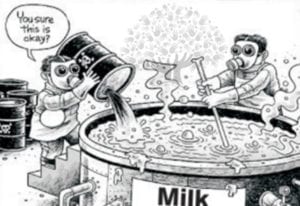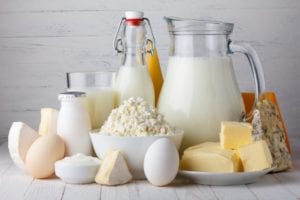Pic source: https://www.indiafilings.com/learn/gst-rate-milk-dairy-products-egg-honey/
This Post is slightly serious and technical, hence please read for your own knowledge
This blog post on checking adulteration of milk products is written by Subrata Chaudhuri as a contributor for Mohamushkil and we are honored to have him on board as a guest writer … The material written is his content and Mohamushkil holds no responsibility for it.
Adulteration in food is a major concern nowadays. People with vested interest are playing with common people’s health. Adulteration are currently carried out so meticulously, that even the laboratory technicians’ gets astonished while checking the samples.
In the era of easy access to internet on your palms, the detection methods of adulteration gets updated regularly but so the people involved in adulteration. It’s better to discuss only the adulteration which can be checked by means of quick home tests only. Publishing some of the adulteration which cannot be checked outrightly will not only make the common people panic but will also be providing new ideas to those miscreants, if they are unknown of the particular adulteration.
So, let’s check the variants here.

Pic from: http://thesocialrush.com/adulteration/
1. Paneer / Channa and Khowa adulterated with Starch – take some quantity of paneer or khowa and boil it with adequate water and allow it to cool. Add 4 – 5 drops of iodine (readily available in first aid box) to the water. If the color changes to blue, it indicates presence of starch in the product.
2. Ghee adulterated with animal fat / vegetable fat / hydrogenated fat (banaspati) – Adulteration of Ghee can be checked 100% accurately with Butyro-refractometer only. However, some facts may help you to differentiate the pure & adulterated ghee. Milk procurement & payment thereof in the country is based on fat percentage only. Currently raw fat price paid to the milk farmers varies in between ₹600-650 per KG of milk fat. Hence, anyone selling Ghee less than ₹700-750 per KG is either selling it with loss or you may better understand. Major Dairies or brands may however can sell at less prices (₹100/kg less than the stated price) as they have the option of selling “Whey” as byproduct. A small observation can also be made for novice adulteration in Ghee. Heat the ghee to liquidify it and pour it in a clear glass vessel, straining solid particles present, if any. Observe it carefully. If it starts to solidify or forms two (or more) different layers before 45 minutes, it is better to have the sample tested with Butyro-refractometer.
3. Adulteration of Milk with detergent – take the milk sample in a test tube or a glass bottle. Shake vigorously closing the opening. Pure milk will have less amount of lather or foam while presence of detergent will increase the amount of lather or foam enormously.

http://oneindiaonepeoplearticles.blogspot.in/2013/07/the-white-poison.html
4. Adulteration of Milk with Urea – take some amount of milk in a test tube or a glass vessel and mix half spoon of crushed soyabean (powder) or “arhar” dal powder (pigeon pea) to it. Shake well to mix it and leave it for 5 minutes. Dip a red litmus paper into the mixed liquid for 30 seconds. If the colour changes to blue, then Urea is present in the milk. But, don’t get panicked if it turns faintly blue, as naturally upto 700 ppm of Urea can be present in milk.
5. Milk adulterated with sugar – just take a instant sugar checking diabetic strip and insert it in the milk. Milk doesn’t contain glucose naturally, hence indication will be clear from the result.
6. Adulterated white liquid, also called synthetic milk, amalgamated with soap, shampoo, oil and many other things (needless to mention them) can easily be detected by rubbing the liquid between your thumb and index finger. A clear feel of hand-wash would generate. Also, if the so called milk starts turning yellow instantly when heated, please do perform the check.
About Subrata Chaudhuri

Pic received from Subrata Chaudhuri
A foodie by birth, pathetic writer by hobby and a Civil engineer by profession, currently associated with Dairy industry. Professional requirement and quest of being foodie lead to acquire some knowledge on foods.
Comments and Critics Welcome.
I can be reached at 9903528225 / indrajit.lahiri@ymail.com


1 comment
[…] image credit: moha-mushkil.com […]